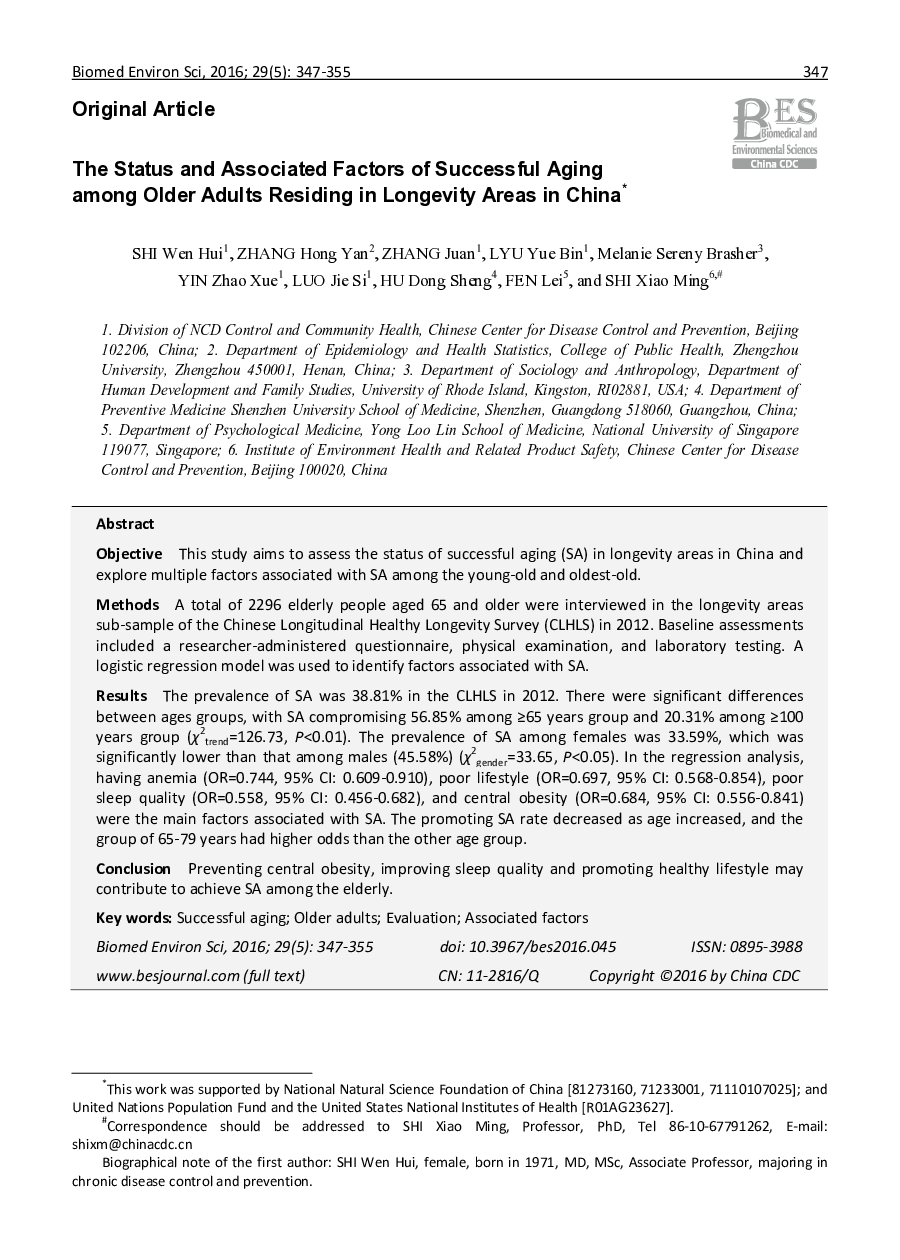| Article ID | Journal | Published Year | Pages | File Type |
|---|---|---|---|---|
| 4195704 | Biomedical and Environmental Sciences | 2016 | 9 Pages |
ObjectiveThis study aims to assess the status of successful aging (SA) in longevity areas in China and explore multiple factors associated with SA among the young-old and oldest-old.MethodsA total of 2296 elderly people aged 65 and older were interviewed in the longevity areas sub-sample of the Chinese Longitudinal Healthy Longevity Survey (CLHLS) in 2012. Baseline assessments included a researcher-administered questionnaire, physical examination, and laboratory testing. A logistic regression model was used to identify factors associated with SA.ResultsThe prevalence of SA was 38.81% in the CLHLS in 2012. There were significant differences between ages groups, with SA compromising 56.85% among ≥65 years group and 20.31% among ≥100 years group (χ2trend=126.73, P<0.01). The prevalence of SA among females was 33.59%, which was significantly lower than that among males (45.58%) (χ2gender=33.65, P<0.05). In the regression analysis, having anemia (OR=0.744, 95% CI: 0.609–0.910), poor lifestyle (OR=0.697, 95% CI: 0.568-0.854), poor sleep quality (OR=0.558, 95% CI: 0.456–0.682), and central obesity (OR=0.684, 95% CI: 0.556–0.841) were the main factors associated with SA. The promoting SA rate decreased as age increased, and the group of 65-79 years had higher odds than the other age group.ConclusionPreventing central obesity, improving sleep quality and promoting healthy lifestyle may contribute to achieve SA among the elderly.
